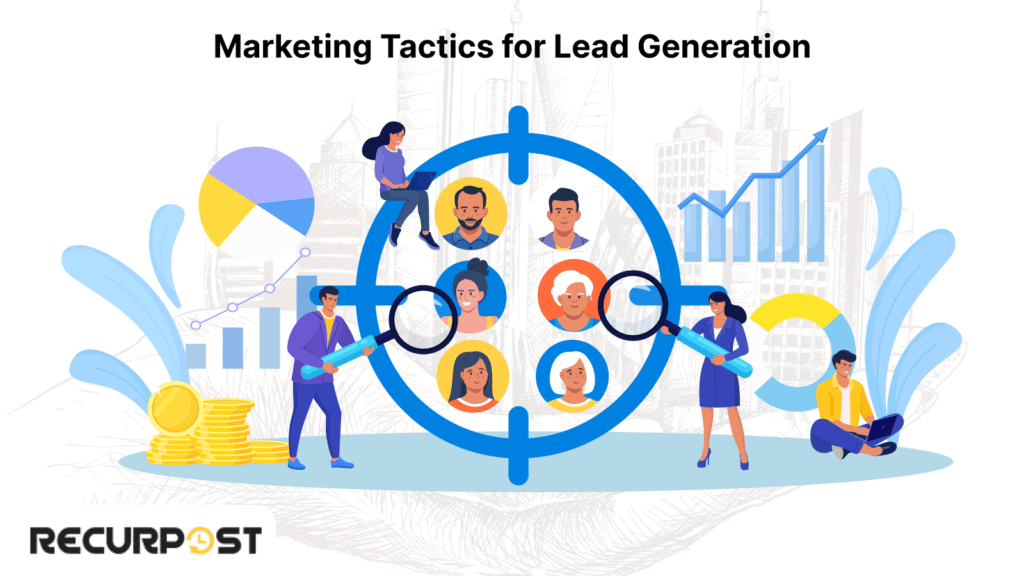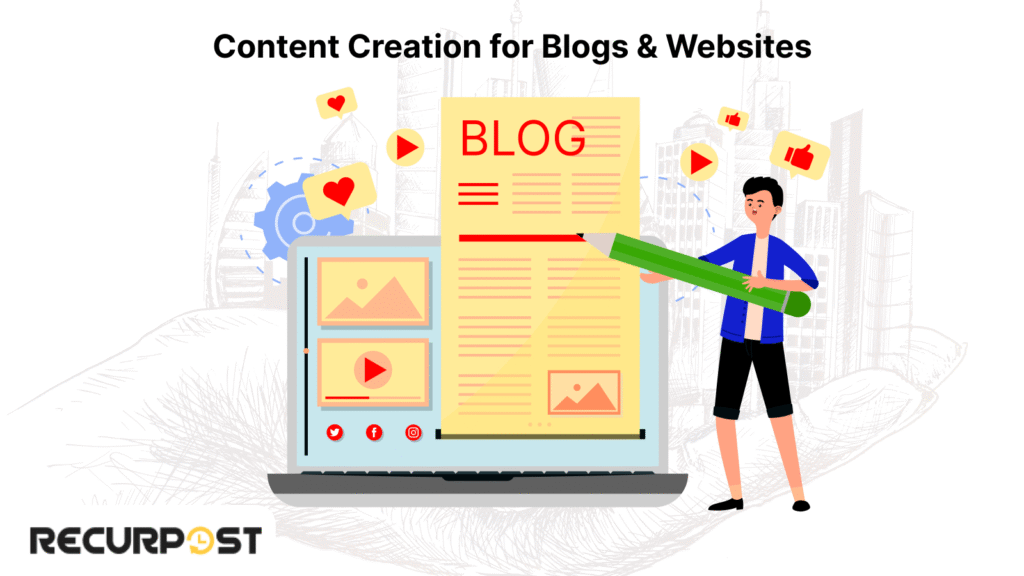Why Real Estate Content Marketing Drives Growth?
In real estate, content marketing sets standout agents and agencies apart. Every real estate professional wants to capture the attention of buyers and sellers. Real estate content marketing gives your business an edge.
The global commercial real estate market is expected to hit $120.02 trillion in 2025. By 2029, it could grow to $126.61 trillion, rising about 1.35% each year. Agents, agencies, and real estate freelancers achieve stronger relationships, increased visibility, and faster business growth through consistent, high-quality content.
Great real estate content builds trust, keeps your brand memorable, and attracts new clients. With a smart real estate content marketing plan, you highlight expertise, reach your target audience, and stay ahead of other agents.
This guide shares proven content ideas for real estate: blog posts, videos, client testimonials, and neighborhood guides. Use these tips to grow leads, engage your audience, and boost your real estate marketing results in 2025.
Key Takeaways
- Develop a solid content marketing strategy to guide all marketing efforts.
- Use lead generation tactics: SEO, social media marketing, and video content to reach more clients.
- Focus on content creation for real estate blogs and websites to attract buyers and sellers.
- Implement lead magnets, strong calls-to-action, and referral programs to convert visitors into leads.
- Track KPIs and measure marketing results to improve continuously and outpace competitors.
- Persistence in real estate content marketing creates business growth and industry authority.
Building a Real Estate Content Marketing Strategy

Every successful real estate content marketing plan starts with a strategy. Without it, real estate agents and agencies risk missing leads and wasting content marketing efforts.
Why a Real Estate Content Marketing Strategy Matters
A strategy aligns your marketing, keeps content relevant, and targets your ideal clients. Real estate marketing works best when content has a clear audience, message, and measurement plan.
Strategy makes each blog post, social media update, and video work together. It connects your content to real goals: brand awareness, lead generation, website traffic, and audience engagement.
Types of Content for Real Estate Marketing
Mix content types for real estate marketing: blog posts and articles, social media updates, video content, property walkthroughs, and email newsletters. Each type attracts different leads and supports real estate content marketing goals.
- Blog Posts: Offer market trends, home-buying tips, and real estate marketing insights.
- Social Media Updates: Feature listings, client stories, and neighborhood highlights on Instagram, Facebook, and LinkedIn.
- Video Content: Share property tours, virtual tours, and expert advice.
- Newsletters: Update current and potential clients with listings, tips, and real estate content marketing news.
Combining content types keeps your real estate audience informed, builds trust, and increases engagement.
Check out the 100 real estate social media post ideas
Competitor Analysis and Content Gaps
Study real estate competitors: review their blogs, listings, and digital marketing. Find missing topics: local market guides, buyer education, and community features. Fill these content gaps with value for your audience.
If most real estate agencies only share listings, use your real estate content to explain buying steps, highlight local businesses, and showcase market reports.
Steps for a Strong Real Estate Content Marketing Plan
1. Identify Your Target Audience: Know your clients: first-time homebuyers, investors, or sellers. Understand their goals, questions, and pain points.
2. Set Marketing Goals: Choose goals: more website traffic, better lead generation, or increased brand visibility.
3. Develop a Content Calendar: Plan content posts for your real estate website and social channels. Consistent posting keeps your brand top-of-mind and attracts new leads.
Key Real Estate Content Marketing Tactics for Lead Generation

With a real estate content marketing strategy set, focus on tactics that capture leads and grow your business. The right content connects with potential clients and encourages them to take action.
SEO for Real Estate Content Marketing
- Use location-specific keywords: “homes for sale in [city],” “top neighborhoods in [location].”
- Target long-tail keywords: “first-time buyer homes with low HOA,” “luxury homes near schools.”
- Add schema markup for property listings to boost search visibility.
- Optimize your real estate website for mobile: over half of searches start on mobile devices.
- Ensure fast site speed to keep buyers engaged.
Social Media Marketing for Real Estate Content Marketing
Social media connects you with your audience and showcases your expertise. Here’s how to make the most of it:
- Post property videos, virtual tours, and market updates on Instagram, Facebook, and LinkedIn.
- Use Pinterest to showcase listings, home décor ideas, and local amenities.
- Run Instagram Stories for property highlights; use Facebook Ads for targeted campaigns.
- Share behind-the-scenes clips and client stories to build trust and brand visibility.
Email Marketing for Real Estate Leads
- Create property walkthroughs, virtual tours, and 360° video experiences.
- Feature client testimonials, local business spotlights, and expert home-buying tips.
- Host a real estate podcast: discuss market trends, answer buyer questions, and interview community experts.
Email Marketing for Real Estate Leads
- Build an email list from website signups, past clients, and new contacts.
- Segment campaigns: send market reports, new listings, home-buying checklists, and neighborhood guides.
- Automate drip email campaigns to nurture leads and convert prospects into clients.
Master Content Creation for Real Estate Blogs & Websites

With real estate content marketing strategy and lead-generation tactics in place, focus on content creation that attracts, engages, and converts. High-quality content for real estate blogs and websites helps you stand out, build authority, and increase lead generation.
Creating SEO-Optimized Blog Posts
- Use SEO keywords: integrate location-based keywords and long-tail phrases in all real estate blog posts.
- Write headlines that answer questions or solve problems for homebuyers and sellers.
- Structure your content: keep paragraphs short, use subheadings, and add bullet points for easy reading.
- Repurpose content: turn in-depth blog guides into videos, social media updates, or email newsletters for real estate marketing and repurpose them.
- Add internal links: connect your blog posts to your property listings, neighborhood guides, or lead magnets to boost SEO and time-on-site.
Creating Local Area Content
- Build neighborhood guides: highlight top neighborhoods, local schools, parks, amenities, and businesses in your area.
- Share school district information: provide insights about local schools for families buying homes.
- Spotlight local businesses: feature community partners and local shops to build engagement and make your content more shareable.
Seasonal Content Planning
Plan content around seasons: real estate content marketing should match buyer needs by season.
- Spring/Summer: Outdoor spaces, garden tips, pool maintenance, market trends for high competition months.
- Fall/Winter: Home winterization, indoor space tips, low-inventory strategies.
- Publish timely market updates: share seasonal trends and timely real estate tips for your local audience.
Internal Linking to Boost SEO
- Link each blog post to related content: guide readers to home-buying checklists, property listings, or market reports.
- Use a clear content structure: help search engines map your real estate website and increase authority for primary pages.
- Highlight calls-to-action with internal links: “See all listings,” “Download our market report,” or “Schedule a tour.”
Optimizing for Conversions
- Use strong calls-to-action (CTAs): every real estate blog post and website page should prompt action, “Schedule a Free Consultation” or “Sign Up for Our Newsletter.”
- Create engagement-focused content: ask readers for comments, shares, and opinions; use polls and questions to drive interaction.
- Place lead magnets: offer downloadable checklists, home-buying guides, or market reports to capture leads.
Lead Generation Through Real Estate Content Marketing

Real estate content marketing drives lead generation for agents, teams, and brokerages. Use these tactics to turn visitors into qualified leads:
Lead Magnets for Real Estate Lead Generation
- Offer ebooks: “The Ultimate Guide to First-Time Homebuying” or “Top 10 Neighborhoods in [City Name].”
- Share local market reports: highlight pricing trends, buyer activity, and neighborhood data.
- Provide downloadable home-buying checklists for first-time buyers or sellers.
- Customize lead magnets to solve buyers’ and sellers’ challenges.
Landing Pages, Forms, and Chatbots
- Link every lead magnet to a dedicated landing page with a simple contact form.
- Keep forms short: name, email, phone number.
- Add chatbots for instant responses: answer questions, suggest properties, or schedule calls.
- Chatbots boost lead conversion through real-time engagement.
Effective Calls-to-Action (CTAs)
- Use strong CTAs throughout your real estate content marketing.
- Examples: “Book a Free Consultation,” “Get Your Free Property Report,” or “Download a Home-Buying Guide.”
- Place CTAs on blog posts, landing pages, and property listings.
Referral Programs for Real Estate Lead Generation
- Incentivize referrals: offer gift cards, free home evaluations, or discounts.
- Encourage satisfied clients to refer friends and family.
- Referral programs build trust and expand your client base.
Paid Ads and Retargeting in Real Estate Content Marketing
- Use Facebook Ads, Instagram Ads, and Google Ads to target specific buyer demographics.
- Run retargeting ads: reach people who visited your website but didn’t convert.
- Retargeting keeps your brand visible and recaptures interested leads.
Tracking and Measuring Success in Real Estate Content Marketing

Real estate content marketing works best when you track results and refine your strategy. Use these steps and tools to measure performance and maximize ROI:
Key Performance Indicators (KPIs) for Real Estate Content Marketing
- Track website traffic: monitor unique visitors, pageviews, session duration, and bounce rate.
- Measure lead conversion rate: see how many website visitors become real estate leads.
- Track engagement metrics: count likes, shares, comments, and clicks on blog posts, videos, and social media.
- Calculate ROI (Return on Investment): compare leads generated and closed deals to your marketing spend.
Customer Journey Tracking and Data Analysis
- Map the customer journey: follow users from the first blog post view to booking a consultation.
- Use Google Analytics for traffic, top-performing content, and conversion rates.
- Track engagement and conversion rates at every stage to spot drop-offs.
- CRM integration (HubSpot, Salesforce, Zoho): follow leads from first contact to closed transaction.
Best Tools for Measuring Real Estate Content Marketing
- Google Analytics: Track website traffic, user behavior, and blog performance.
- SEMrush: Monitor SEO, rankings, backlinks, and keyword growth.
- HubSpot: Track lead activity, email performance, social media engagement, and CRM data.
- CRM Tools: Salesforce, Zoho, and others for customer journey tracking, engagement, and sales pipeline analysis.
Use these tools for data-driven decisions, content gap identification, and continuous improvement in your real estate content marketing strategy.
Case Study: Real Estate Content Marketing Success in Action

Real estate content marketing turns browsers into leads by sharing valuable, authentic content at the right time. Here are two real-world examples:
1. Mike Bussey: TikTok Walk-throughs for NYC Apartments
Instead of paid ads, Mike Bussey posted short video tours of Manhattan flats on TikTok. By highlighting unique features and adding bite-sized market tips, videos reached wide audiences.
- Used mobile-friendly video content on TikTok instead of paid ads.
- Shared authentic walkthroughs of Manhattan apartments with market tips.
- Profile reached 1,000+ potential clients monthly.
- Built 20,000 organic followers on TikTok, Instagram, and YouTube.
- The top video received 300,000+ likes and drove trust and direct inquiries.
- All lead generation came from social media, with no ad spend.
2. The Cari McGee Team: Blogging and SMS Call-to-Action
Cari McGee, A Seattle-based brokerage, has kept a blog running since 2006, sharing local market insights, home-buying tips, and neighborhood guides. They paired every page with an SMS “ask a question” prompt powered by Leadferno.
- Ran a real estate blog since 2006: published market insights, home-buying tips, and neighborhood guides.
- Paired each blog page with an SMS “ask a question” call-to-action using Leadferno.
- Website leads grew by 240% year-over-year.
- $58,000 in commissions generated from SMS leads.
- 77% of new inquiries received replies within 30 minutes.
- Combining valuable blog content with instant SMS engagement multiplied qualified leads.
Takeaway: A strong real estate content marketing plan with authentic content, video, local guides, and simple CTAs drives organic growth, more leads, and higher trust without paid ads.
Building a Personal Brand with Real Estate Content Marketing

Real estate content marketing helps agents build a personal brand, earn trust, and connect with prospective buyers. Use these tactics to grow your influence and reputation:
Why Personal Branding Matters for Real Estate Agents
- 65% of buyers choose agents based on trust and reputation.
- A personal brand highlights your expertise, values, and local market knowledge.
- Trust building sets you apart in a competitive real estate market.
Tips for Building Your Personal Brand
1. Share Your Journey and Expertise
- Tell your story: how you started, what motivates you, and lessons learned.
- Share selling tips, memorable client stories, and behind-the-scenes moments.
- Use blog posts, videos, and social media content to connect on a deeper level.
2. Leverage Social Media for Personal Branding
- Post on Instagram, LinkedIn, and Facebook to show your work and expert advice.
- Share market trends, property highlights, and home maintenance tips.
- Social media marketing expands your audience and builds your brand presence.
3. Offer Value-Added Content
- Publish helpful guides, home maintenance checklists, market updates, and neighborhood insights.
- Valuable content positions you as a real estate expert that buyers can trust.
4. Engage with Your Local Community
- Attend events, sponsor local initiatives, and participate in community groups.
- Highlight community engagement in your real estate content marketing.
- Building local relationships expands your brand and referral network.
5. Stay Consistent Across Channels
- Use consistent messaging on your website, social media, and all content.
- Consistency builds brand recognition and trust over time.
- Keep your personal brand authentic and aligned with your core values.
Conclusion
Real estate content marketing fuels business growth through consistent, valuable content and strategic planning.
Start by creating content that speaks directly to your target audience, addressing their real estate questions and needs. Regularly track your engagement and results, then adjust your content plan to focus on what works best. By consistently sharing valuable, relevant content, you’ll build trust, generate more leads, and stand out in the real estate market.
FAQs on Real Estate Content Marketing
1. How do I start a real estate content marketing campaign?
Begin by identifying your target audience and setting clear goals. Create a content calendar to plan your posts across channels. Choose content formats that resonate with your audience, such as blog posts, social media updates, and videos. Stay consistent with your messaging and adjust based on performance.
2. What content should I create for real estate marketing?
Focus on educational content that helps your audience make informed decisions. Topics like home-buying tips, market trends, and neighborhood guides are valuable. Real estate blogs should also include success stories, local area content, and listings with detailed descriptions.
3. How do I generate leads through real estate content marketing?
Offer valuable resources such as market reports, home-buying checklists, or free consultations. Ensure you have strong calls-to-action (CTAs) on all your content, like “Book a Free Consultation” or “Get Your Free Property Report.” Lead magnets are a great way to capture information from interested prospects.
4. What are the best social media platforms for real estate content marketing?
Instagram and Facebook are ideal for sharing property photos, virtual tours, and client success stories. LinkedIn works well for B2B connections, while Pinterest can be great for sharing visually appealing property content. Each platform offers unique opportunities to engage with your audience.
5. How can I measure the success of my real estate content marketing strategy?
Track metrics such as website traffic, lead conversion rates, engagement on social media, and ROI. Tools like Google Analytics, SEMrush, and HubSpot can help monitor performance and make data-driven decisions. Keep track of where prospects are in their buyer journey and how your content is influencing their decisions.
6. How do I create content that appeals to both buyers and sellers?
Create content that speaks to the needs of both groups. For example, “Tips for Buyers & Sellers in a Competitive Market” can offer insights that benefit both parties. Highlight how your services can help each group at various stages of their journey, from buying tips to selling strategies.
7. What are the legal considerations when creating real estate content?
Ensure that all content complies with fair housing laws and accurately represents properties. Always include disclaimers and avoid misleading statements. Additionally, obtain consent before using any testimonials or third-party content, and make sure all information you provide is truthful and up-to-date.
8. What are the best practices for creating engaging real estate content?
Use a content calendar, focus on video tours, blog posts, and neighborhood guides. Post consistently, use high-quality visuals, and optimize for local SEO to attract and engage clients.
9. How to ensure my blog content complies with real estate marketing regulations?
Use only verified data, avoid false claims, disclose licenses, and follow state laws. Add disclaimers and get permission for testimonials and images.
10. How to grow a local real estate brand?
Target your local audience with community content, neighborhood highlights, and local SEO. Be active on social media and share valuable content that builds trust.
11. How to create real estate content?
Set clear goals, create a content calendar, and post blogs, videos, and social media updates. Use local keywords and track performance with analytics tools.

As a passionate content writer, I love blending creativity with research to craft compelling narratives that inform, engage, and inspire. With a strong focus on user engagement and brand communication, I create content that resonates with the audience and drives meaningful interactions.





